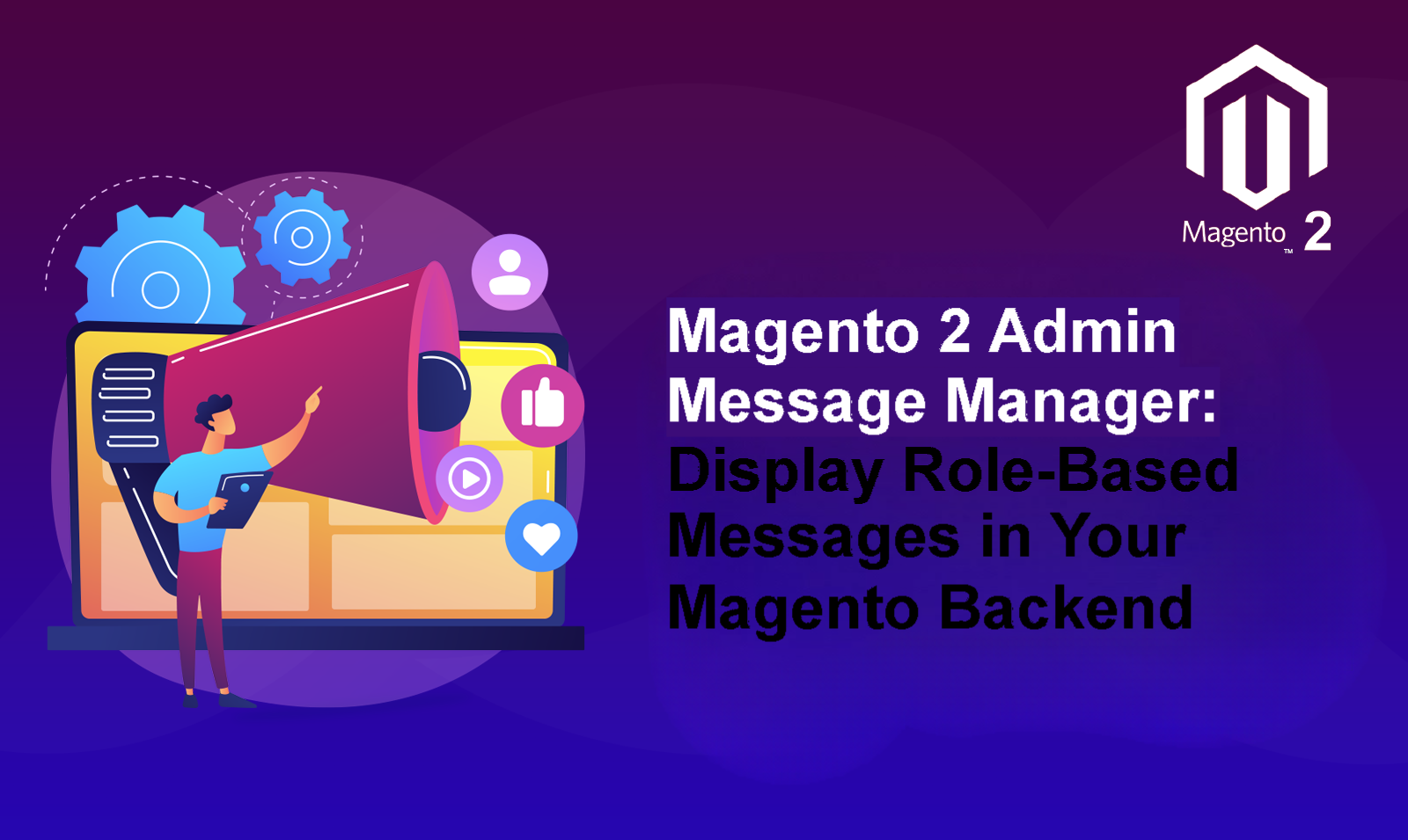
The Magento 2 Admin Message Manager is a powerful extension that allows store owners and administrators to display custom system messages within the Magento backend — tailored to specific admin user roles.
Whether you want to alert your merchandising team about locked pricing or notify content managers about campaign deadlines, this tool makes it effortless and centralized.
Why You Need Admin Messaging in Magento 2
By default, Magento doesn’t support admin-to-admin communication or internal alerts.
Adding the Magento 2 Admin Message Manager solves this by letting you:
- Display custom messages in the admin panel
- Control visibility based on user roles
- Highlight critical updates using severity types (Notice, Error, Warning, Success)
- Format messages with HTML styling and clickable links
- Manage messages centrally via a powerful admin grid
This extension acts as a role-sensitive broadcast system for internal communication.
Core Features of the Magento 2 Admin Message Manager
1. Easy-to-Use Admin Message Grid
Access it via: Admin > System > Admin Message Manager
The grid shows all custom messages and lets you manage them efficiently.
Fields include:
- Message ID
- Message Label
- Message Text
- Severity Type (Notice, Warning, Success, Error)
- Target User Roles
- Status (Active or Inactive)
- Created/Updated Date
Grid Features:
- Add/Edit/Delete messages
- Filter by label, date, or severity
- Mass delete via checkboxes
- Sort and paginate messages (20, 50, 100 per page)
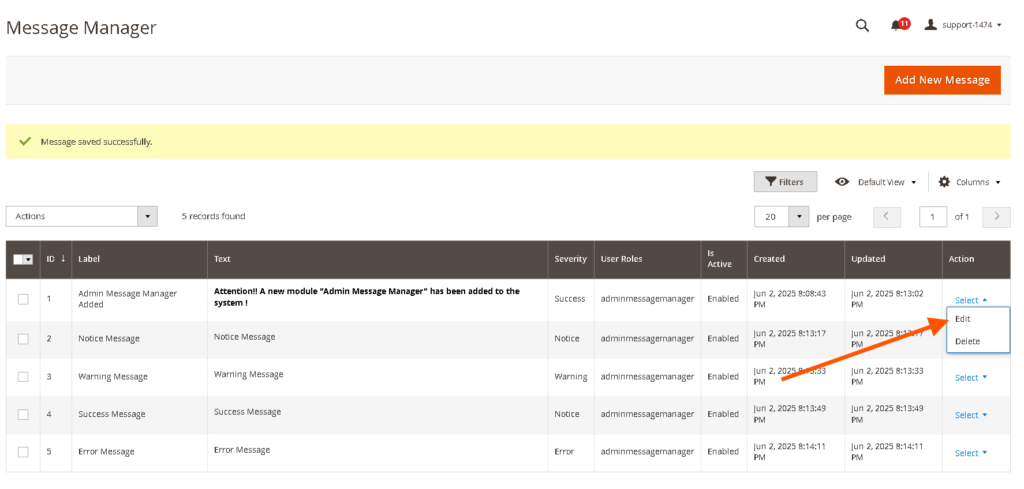
2. Create a New Admin Message with Role-Specific Visibility
Steps:
- Navigate to Admin > System > Admin Message Manager
- Click “Add New Message”

- Fill the form:
- Status: Active or Inactive
- Label: Internal identifier (optional)
- Message Text: Use WYSIWYG editor, supports basic HTML
- Severity: Notice / Warning / Success / Error
- Target User Roles: Multi-select from admin role list
- Click Save.

You’ll be redirected to the admin grid with success notification.
3. WYSIWYG Editor with Safe HTML
Message text box supports formatting via an HTML-safe WYSIWYG editor.
Allowed tags:
<a>for clickable links<strong>for bold text<em>for italics
Messages are sanitized for security — so your admin panel stays safe.
4. Message Display Logic for Admin Users
Messages are shown only to users with matching roles and when the message is Active.
They appear as sticky banners at the top of the admin panel.
Severity-based design:
- Success → Green
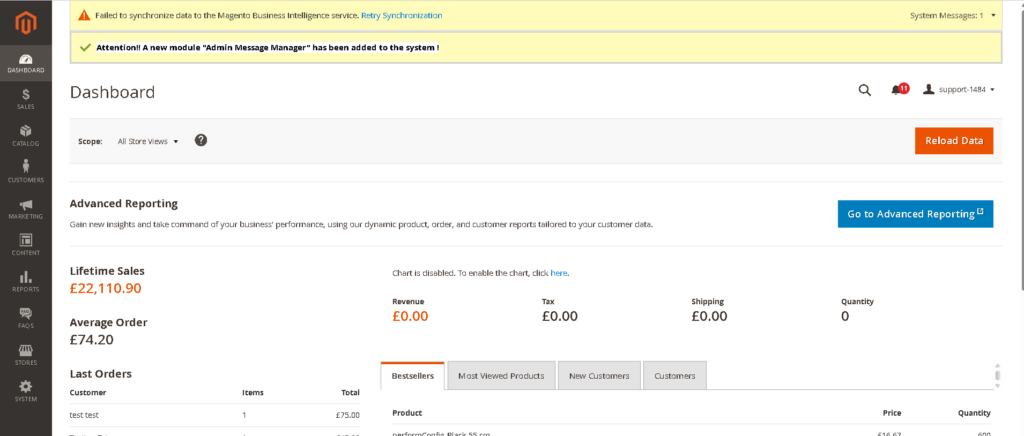
- Notice → Blue

- Warning → Orange
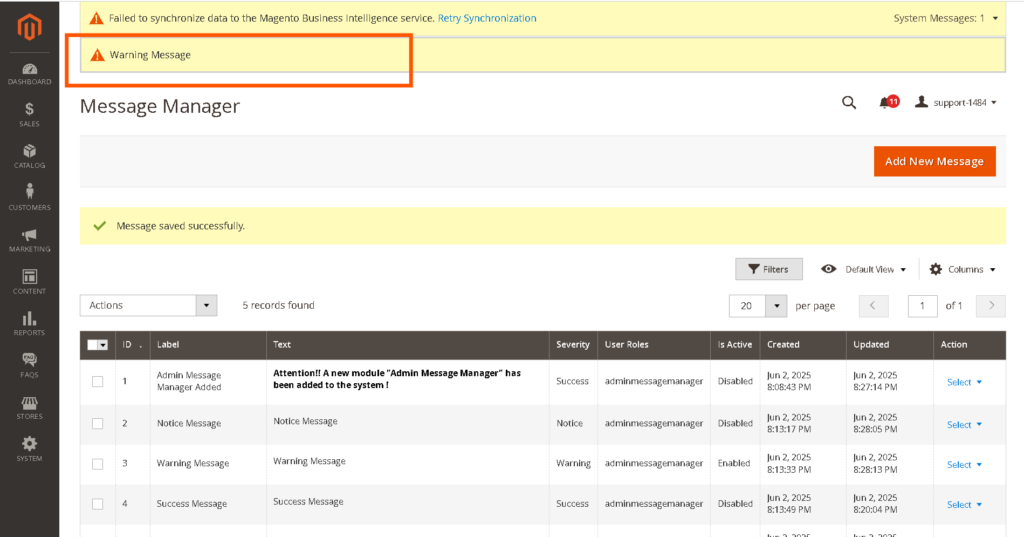
- Error → Red
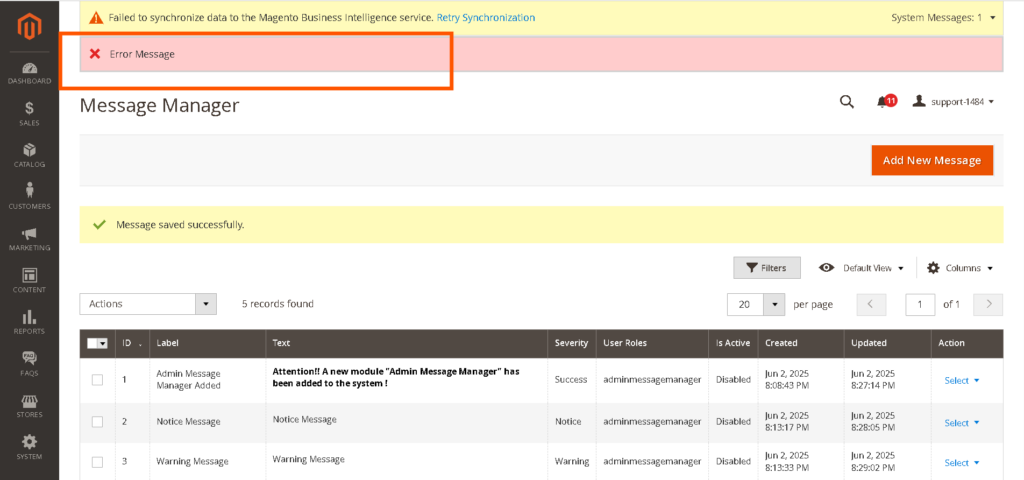
5. Edit or Delete Messages Efficiently
Edit Message:
- Click “Edit” on the grid
- Make changes
- Click “Save” or “Delete”
Delete Message:
- Single Delete: From grid or Edit page
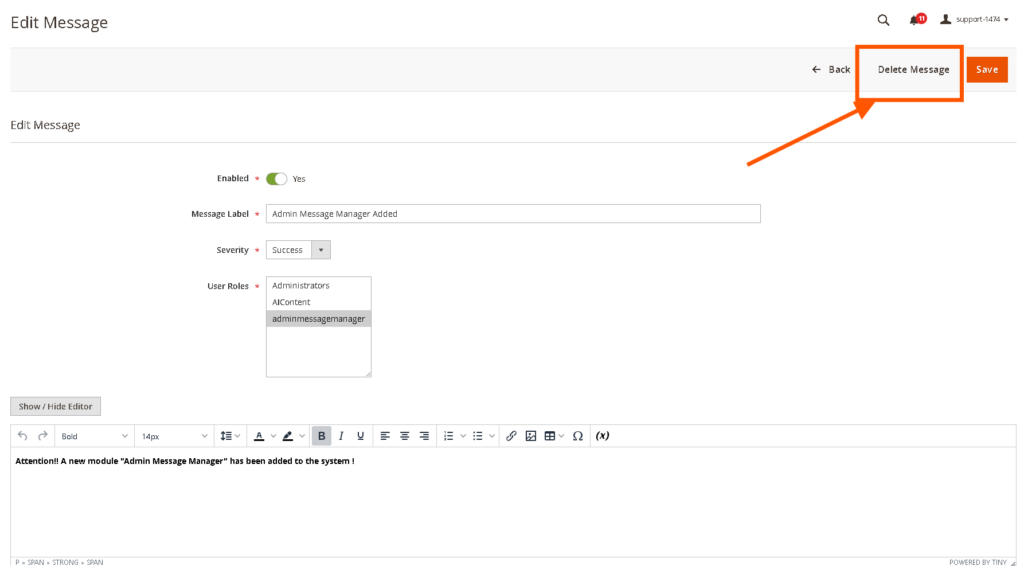
- Mass Delete: Select multiple, then choose “Delete” from Actions
Confirmation prompts prevent accidental deletion.
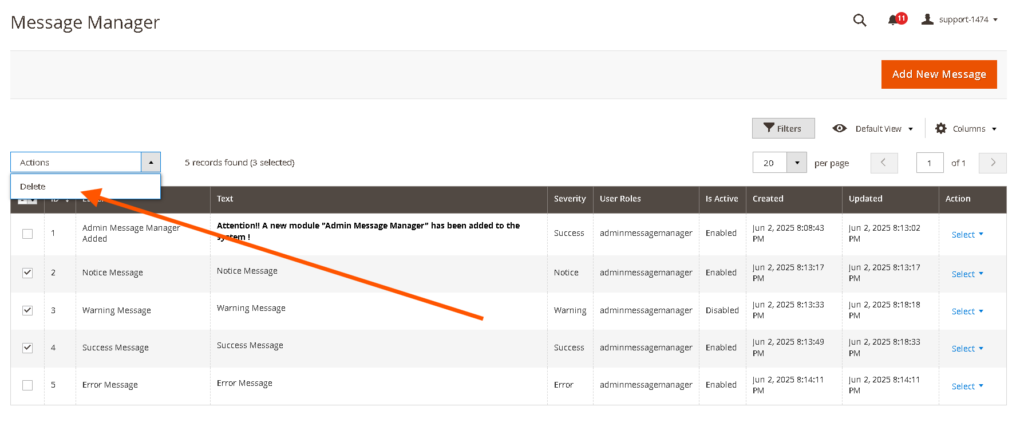
6. Role-Based Access Control
Only users with the correct permission can access and manage the Magento 2 Admin Message Manager.
Set permission under:
System > Permissions > User Roles > Role Resources > Scommerce Admin Message Manager Section
Limit access to avoid unauthorized message broadcasting.
Real Use Case: Alerting Teams with Role-Specific Messages
A promo campaign is going live. The pricing team wants to prevent content edits.
Using this extension, they create a Warning message visible only to the Content Manager role:
⚠️ Do not update promotional pages until July 5. Pricing finalizations in process.
This alert appears directly in the admin panel — targeted, visible, and persistent.
Benefits of Using Magento 2 Admin Message Manager
- Improves internal communication
- Prevents role confusion and manual emails
- Keeps alerts within the working platform
- Helps manage operational risk during campaigns
- Easy to maintain in Magento UI
- Central, role-based messaging for any admin team
Step-by-Step Summary
| Action | Steps |
|---|---|
| Access Grid | Admin > System > Admin Message Manager |
| Create Message | Click “Add New Message”, fill form |
| Edit Message | Click “Edit”, update fields, save |
| Delete Message | Inline or bulk delete via checkboxes |
| View Message | Role-matched admins see sticky banners |
| Restrict Access | Assign permission via Role Resources |
Final Thoughts: Should You Use Magento 2 Admin Message Manager?
Yes — especially if your Magento backend is shared by multiple teams or roles like:
- Merchandisers
- Developers
- Content Editors
- Sales Admins
- Marketing Managers
The Magento 2 Admin Message Manager keeps everyone aligned with real-time alerts. It simplifies backend communication and brings clarity where confusion could cost you time or customer satisfaction.





